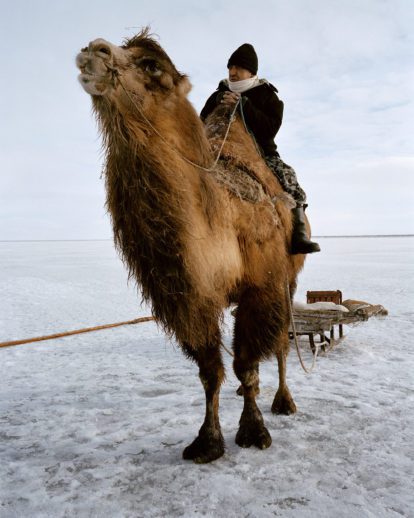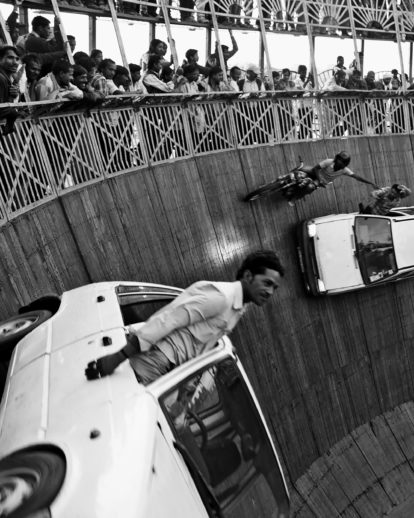The gaucho has been a controversial figurehead in Argentina since the term was first coined over 200 years ago. Historically gauchos were nomadic, skilled horsemen of mixed Spanish and native American descent. Their equestrian prowess, renowned fearlessness, and knowledge of the land made them formidable players in the wars for independence against the Spanish in the 19th century. Yet while the gaucho was celebrated by some as a symbol of freedom fighting, others saw him as a lawless rebel with an uncivilised and unsavoury lifestyle. That means – perhaps inevitably – that the figure of the gaucho has been romanticised and vilified in equal measure.
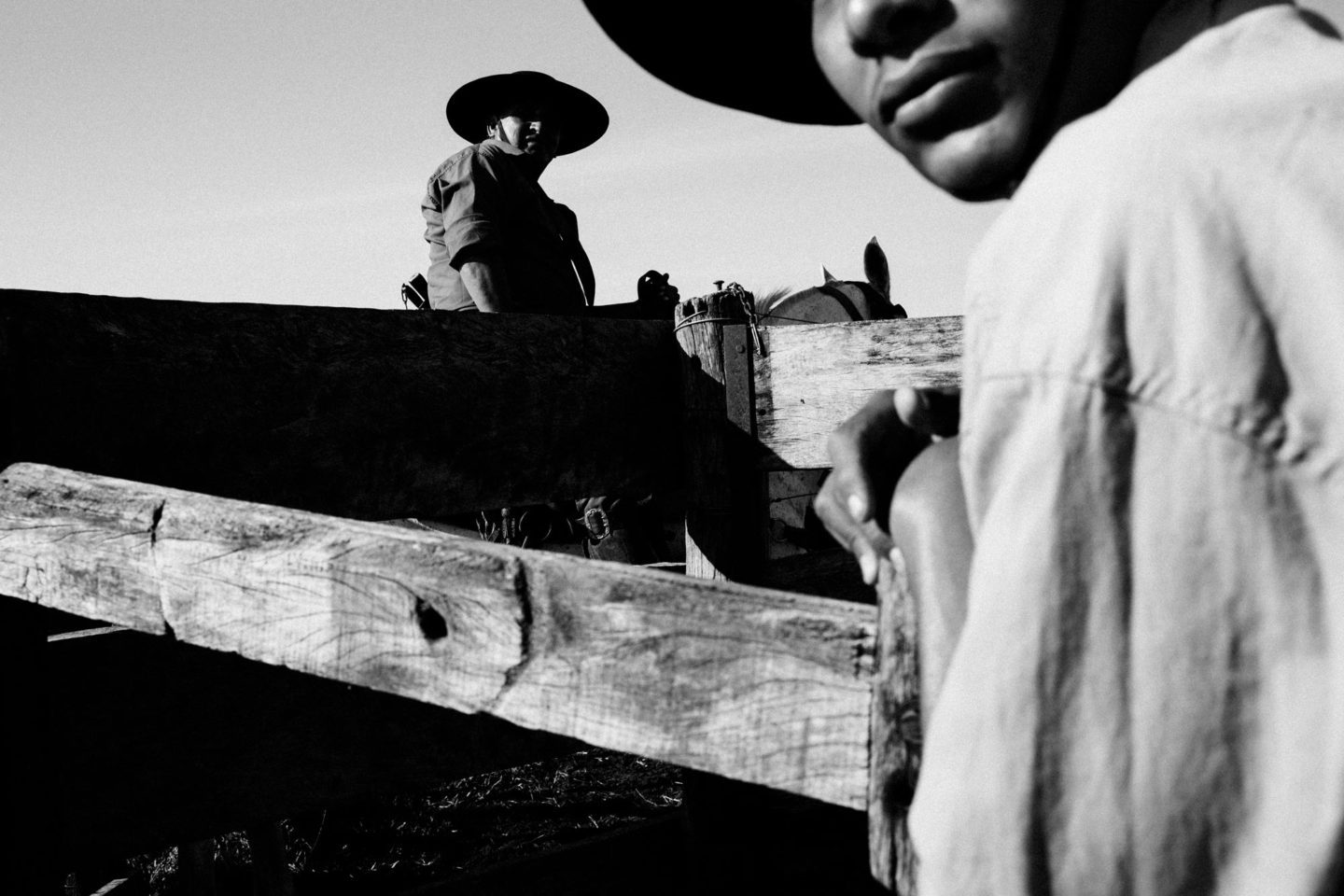
Photography: Greg Funnell.
This has spawned an entire culture: song and tango lyrics, epic poems, folk tales and novels have debated the virtues and vices of the alternative lifestyle of a gaucho. There was a moment when even Charles Darwin weighed in on the debate. Writing in South America in 1831, he declared, ‘The gauchos are superior to the inhabitants in the city. Invariably, the gaucho is obsequious, very courteous, very hospitable; I have never seen a case of rudeness or inhospitableness. [He is] full of modesty when he speaks of himself or of his country, and at the same time is daring and brave.’
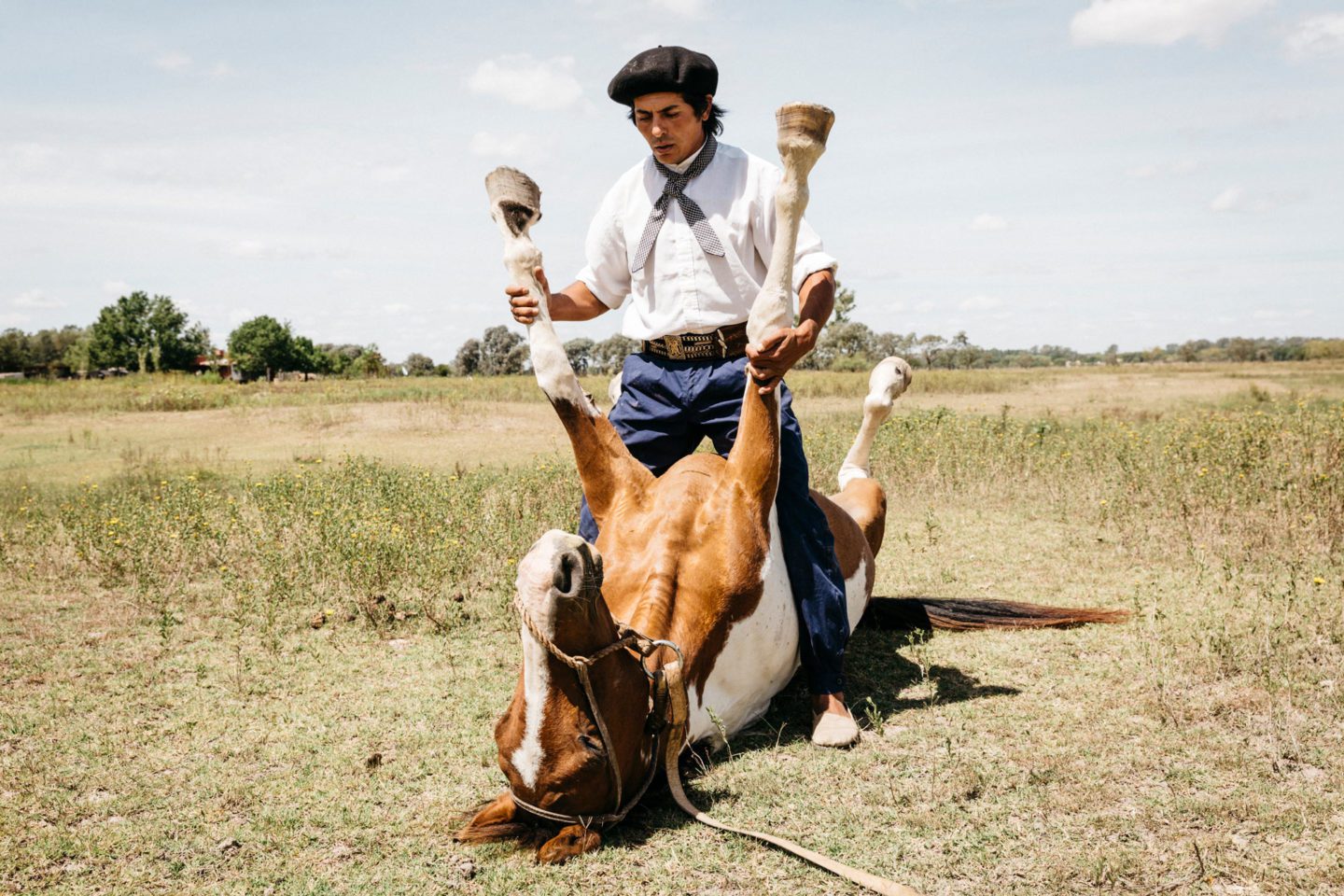
Martin Tatta from San Antonio de Areco, is famous throughout the Americas as a horse whisperer. He practises doma india – skills passed down from native Indians. Photography: Greg Funnell.
Yet the gaucho seldom has a literary or political mouthpiece of his own. Often he cuts a silent and solitary figure – rarely fully embroiled in the conflicting dogmas that surround him. Some even see the term as a stigma. This has caused many a so-called ‘gaucho’ to refer to himself instead as a peon [labourer], campesino [field worker], paisano [peasant] or some other term equally synonymous with the simple, outdoors lifestyle and hard work carried out in the field.
Whatever the name used, it’s undeniable that gauchos – as skilled horsemen and cattle hands – were key players in establishing and growing Argentina’s agricultural economy, which boomed in both domestic and export markets through the 19th and 20th centuries. With their ability to adapt to extreme conditions and challenging environments, gauchos managed to live off the land in a self-sustainable and undemanding manner. It was directly because of their influence that at the dawn of the 20th century, Argentina’s wild backlands had been tamed, ready for a new era of prosperity.
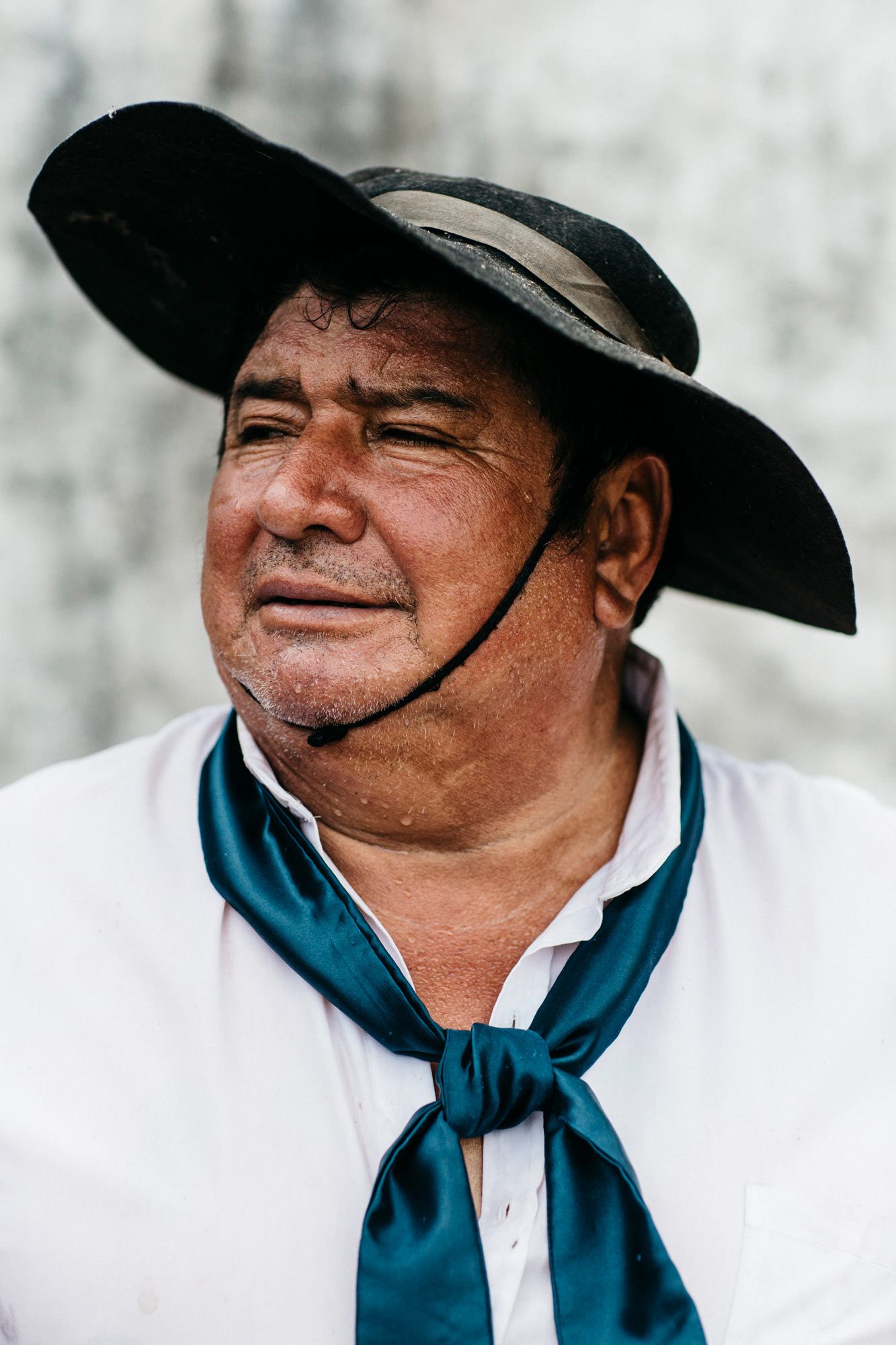
Mecho runs his own small estancia in north eastern Argentina. He's politically active in the region and takes part in traditional parades in his local town. He owns a collection of 40 lassos. Photography: Greg Funnell.
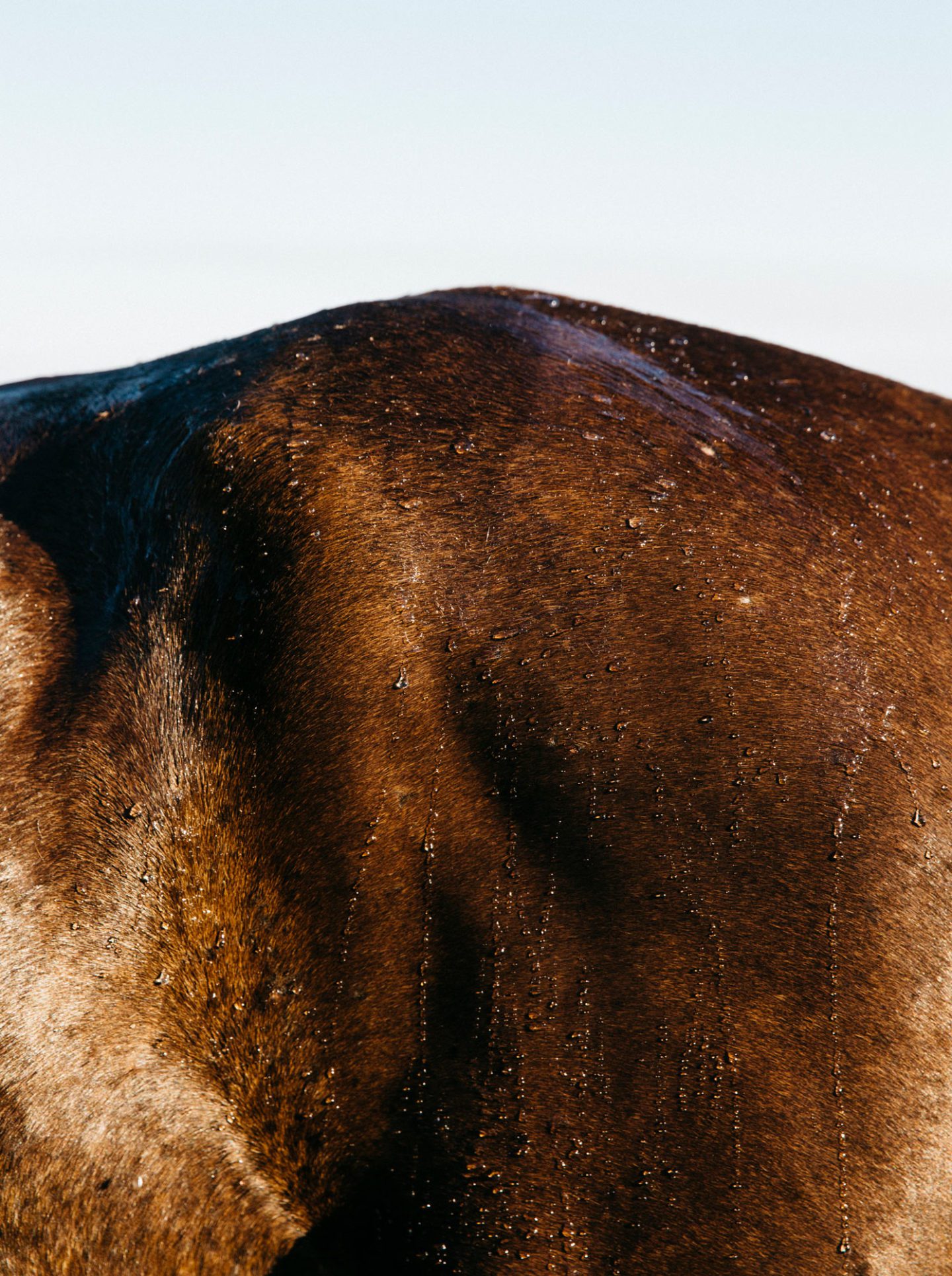
Water glistens on a horse’s back after its owner washes it down after a long ride. Photography: Greg Funnell.
Adapting to the uninhabitable
In Patagonia, where winds easily whip up to 60 miles an hour and night-time temperatures can remain below freezing for months at a time, the challenge is both physical and mental. In one of the world’s most sparsely populated territories, the puestero – the gaucho who safeguarded the end of a territory from vicious puma attacks – might not have seen another human for the best part of a year. In their care would be hundreds to thousands of sheep and droves of cows, constantly under threat from predators that included pumas. In the watchful sky above, scavengers circled constantly.
The Patagonian gaucho would fashion leather and wool-lined boots from their flock and thick ponchos to protect them from the harsh wind and maintain body heat. A fire would be continuously stoked in a wind shelter so that there was a constant stream of hot water available for highly-caffeinated herbal mate tea, an essential tool for keeping an eye open during the night hours when pumas were most active.
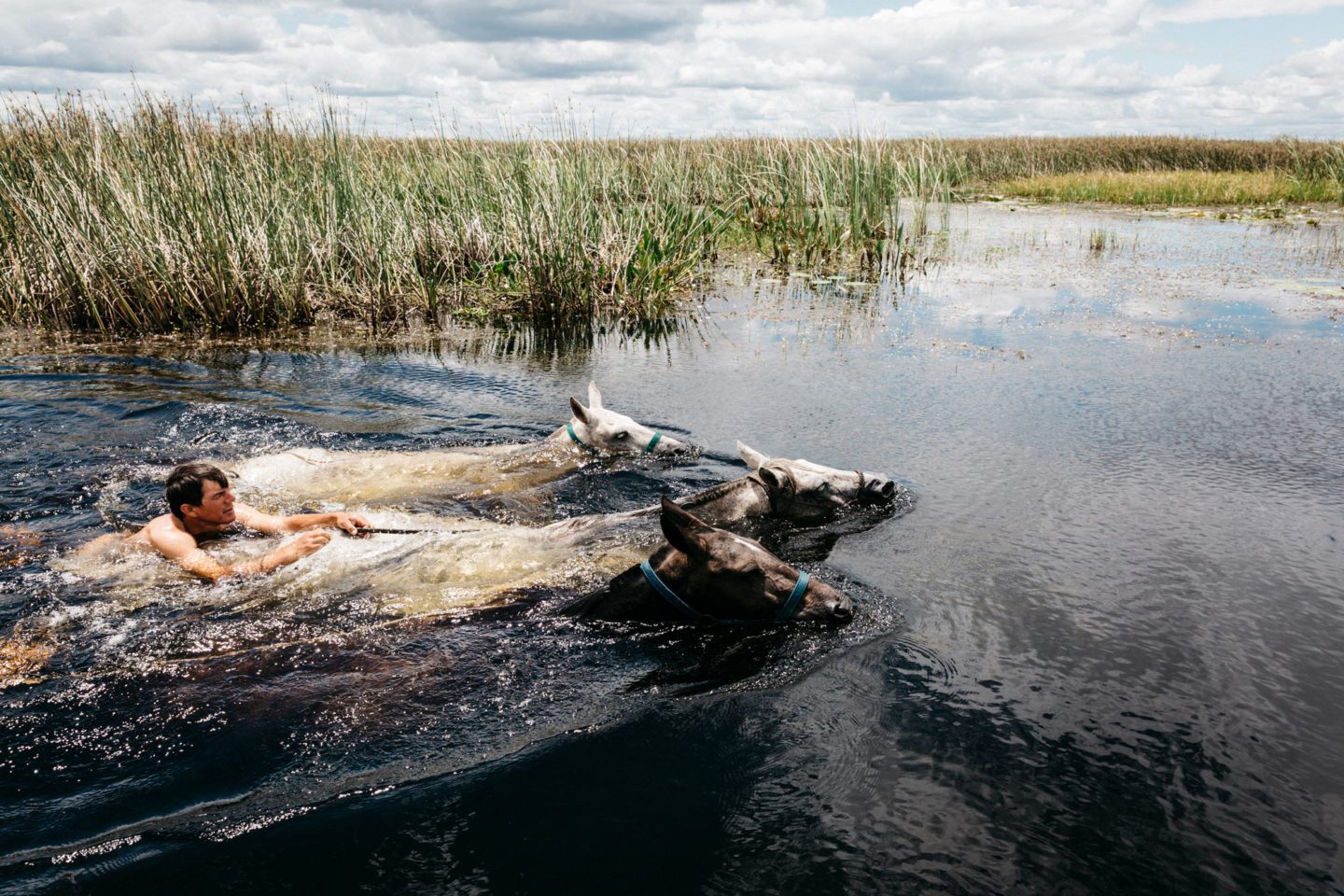
Ruben swims with three horses on his way to Ruguá in the wetlands. To do so and to keep control of the horses takes great skill. The rider controls the horses and swims behind, avoiding its hind legs. Photography: Greg Funnell.
While the vast mountainscape of deep Patagonia brought the challenge of biting wind and ravenous mountain cats, the landscape at the opposite end of Argentina, in the far northeastern corner, brought altogether different challenges. Covered in vast swathes of swampy water, with sharp-toothed caimans waiting on the fringes and even-sharper-toothed piranhas lurking underwater, the wetlands has been the most challenging environment of all for the gaucho to conquer.
The gaucho who safeguarded the end of a territory from puma attacks might not have seen another human for the best part of a year.
Grazing opportunities were few and far between and the landscape constantly evolved with the seasons. A gaucho in the east had to manage both land and water, adapting their horse and riding skills to both. Making all their equipment from fast-drying leather and riding barefoot, a gaucho in the wetlands would often be knee deep in water if not swimming with their horses. Saddles needed to be light and easy to, for instance, be thrown into a canoe when traversing wetter pastures where bareback riding was necessary.
Even though on dry land, the gaucho had to be wary of unexpected jaguar attacks, here the most frequent predators for his herd were fleas and flies which attacked the flesh sores of injured cattle. Left untreated, flesh infections are the greatest killer of cattle in the wetlands. The gaucho had to constantly make his way around the expansive hostile terrain, constantly checking on the welfare of each animal.
In the central Pampa, life was easier. Dry and warm weather, flat and solid terrains and expansive lands uninterrupted by predators or people made life for horsemen and cattle more fruitful. It was here, closest to the market city of Buenos Aires, that the cattle industry thrived and gauchos were most in demand for work during the 19th and 20th centuries. The trading post of San Antonio de Areco became the heartland of gaucho traditions as the streets became lined with artisans producing saddlery and silverware for rare moments of affluence.
A gaucho in the Pampa would wear his own handmade leather tools – lasso, whip and bolas (balls on rawhide cords) – alongside a silver-embellished belt to carry his wealth. His trusty stead would be dressed in finery too. In 1939 the inaugural ‘Day of Tradition’ celebration was held, an annual festival to celebrate the gaucho skills and customs that were fast making this one of the wealthiest regions in Argentina. By now the gaucho had become an icon of Argentina’s criolla (Creole) culture.
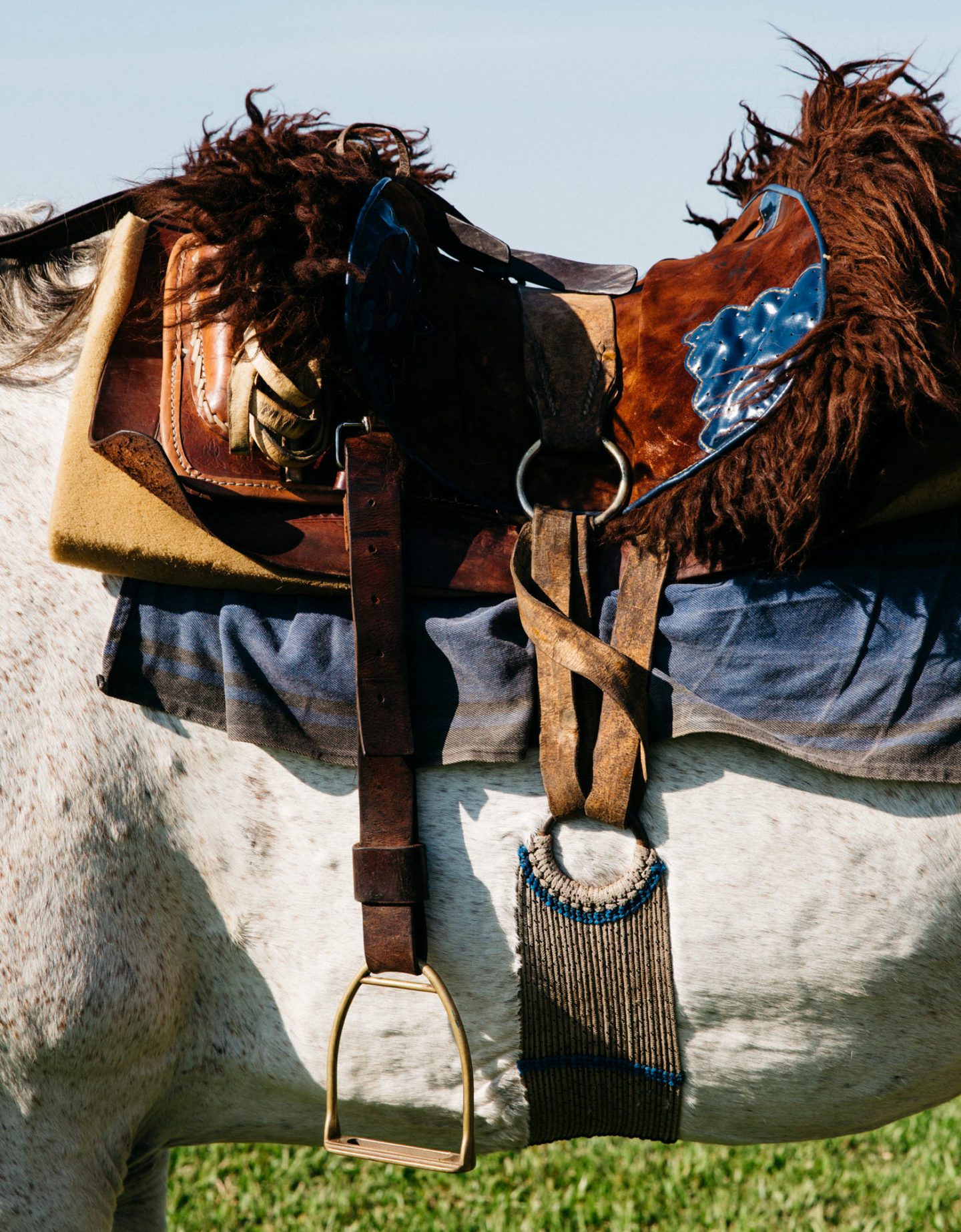
Most gauchos like to personalise their saddles and take pride in the matter in the same way a truck driver might decorate their cab. Photography: Greg Funnell.
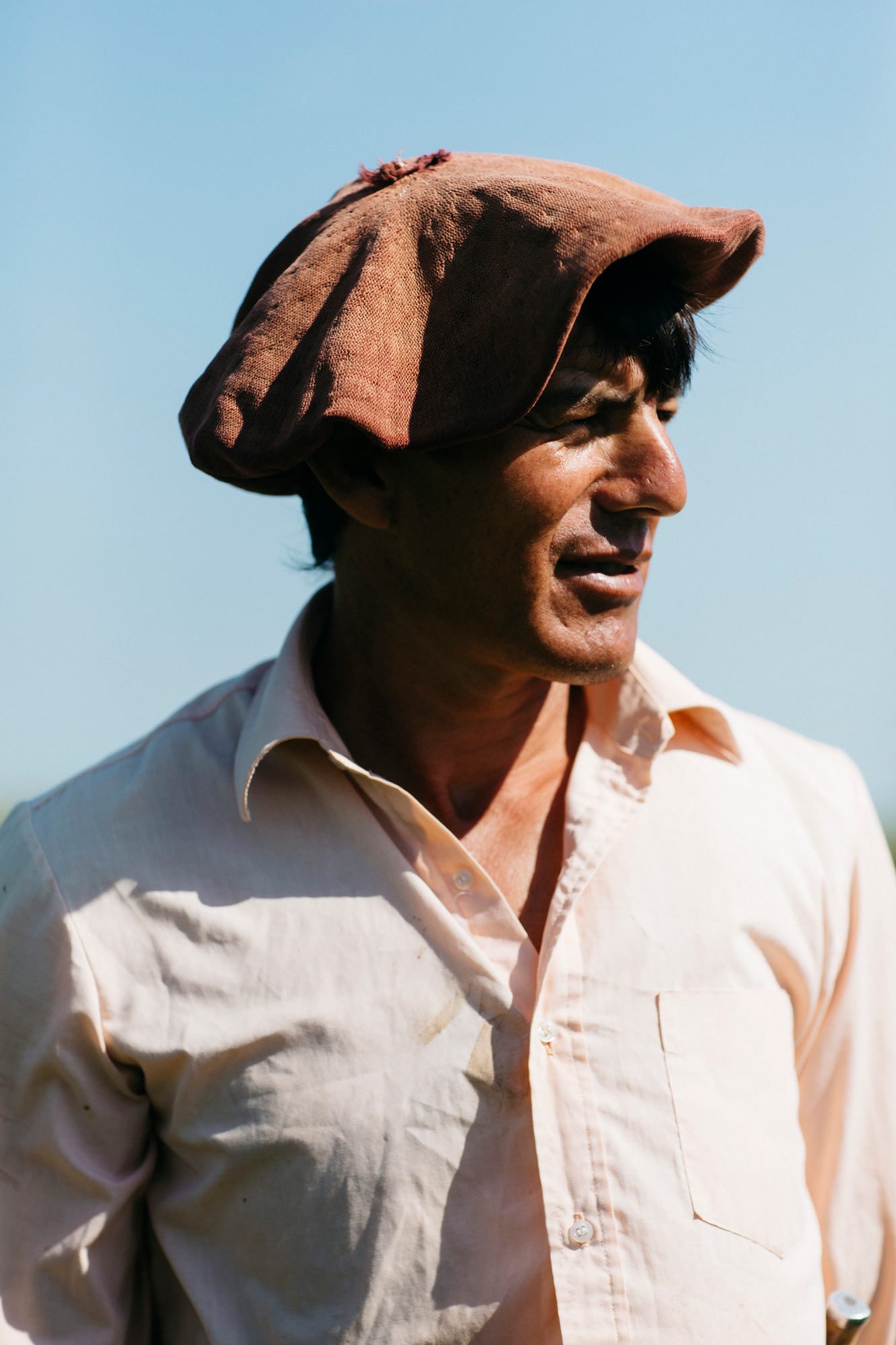
Ruben was born in Iberá Ruguá in the Wetlands, hours from the nearest town. He had learnt how to ride a horse by the age of three. Photography: Greg Funnell.
A tide of change
During the 19th and early 20th century, large estancias across Argentina spread out for thousands of hectares, with a cow typically having between 1 and 10 hectares in which to roam. The cattle-herding and horse riding skills of the gaucho were fundamental in controlling and managing the estancias – which were often without physical boundary. Cattle would roam for miles, foraging on grass and native trees. The quality of Argentine beef became world renowned.
The reality in cattle farming today, however, is a far cry from its heyday. The industry has changed as a tough economic reality impinges. Feedlots or fattening corrals, where 100 to 500 cows can share just one hectare of land, are becoming more common. While business for the owner is more prosperous and efficient, intensive farming pollutes the environment more.
Deforestation caused by the growing demand for grain production is escalating, and, as the need for skilled horsemen decreases, work for gauchos is fast fading. As the economy transitions and work dries up, the new generation is less willing to toil in the remaining estancias. The gritty reality of gaucho life has little interest for them. Fragments of gaucho tradition and customs have been re-appropriated into pop culture. But that can’t conceal the fact that it is largely on the verge of extinction.
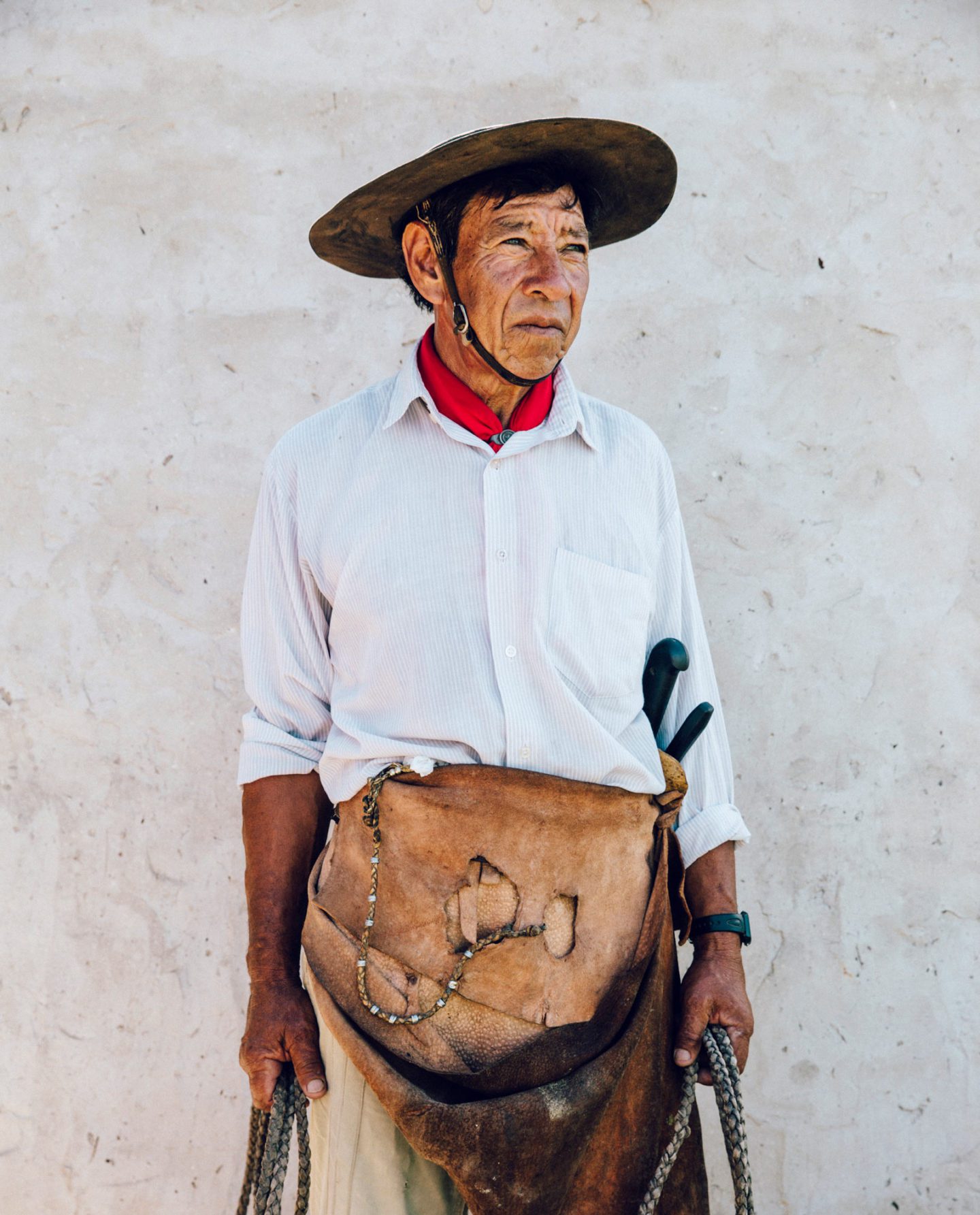
Ramon was born in the village of Uguay in the Highlands of the wetlands. He has worked on estancias all his life but many have ceased operating, and he now rears his own cattle only for meat to feed his family. He is named after the local saint and shares his name with most men in the village. Most women in Uguay are called Ramona. Photography: Greg Funnell.
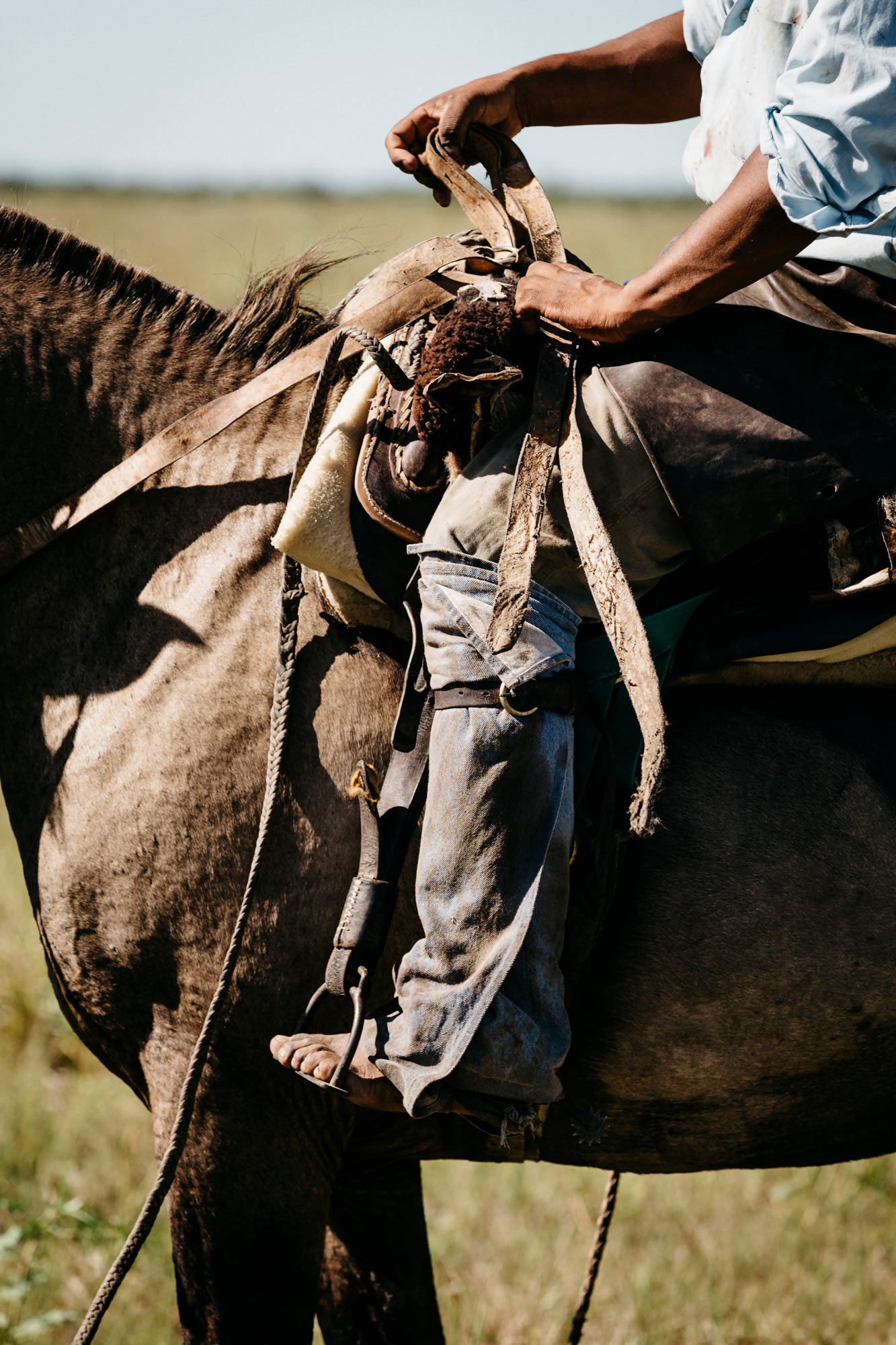
Photography: Greg Funnell.
In Patagonia, the mountainous lands are now protected under national park status. A burgeoning tourism industry is pushing agriculture out to the empty steppes. In the Pampa, the fast money offered by soybean production has former estancia-owners in its thrall. As a direct result the rural economy is drying up, since fewer cattle hands are needed in this modern world of intensive farming. It’s a major challenge for gauchos in the Pampa and Patagonia today to adapt to the new climate and work opportunities, whether that be in tourism or farming of a different kind.
So it’s no small irony that it is only in the wetlands, where humidity has dampened the development of many other industries, that – despite similar and growing challenges – gaucho skills are still valued. These challenging breeding grounds have created some of the most skilled horsemen on the continent today. The cattle of the wetlands, which are traded all over Argentina, are valued for their hardiness and resistance to fleas and pests.
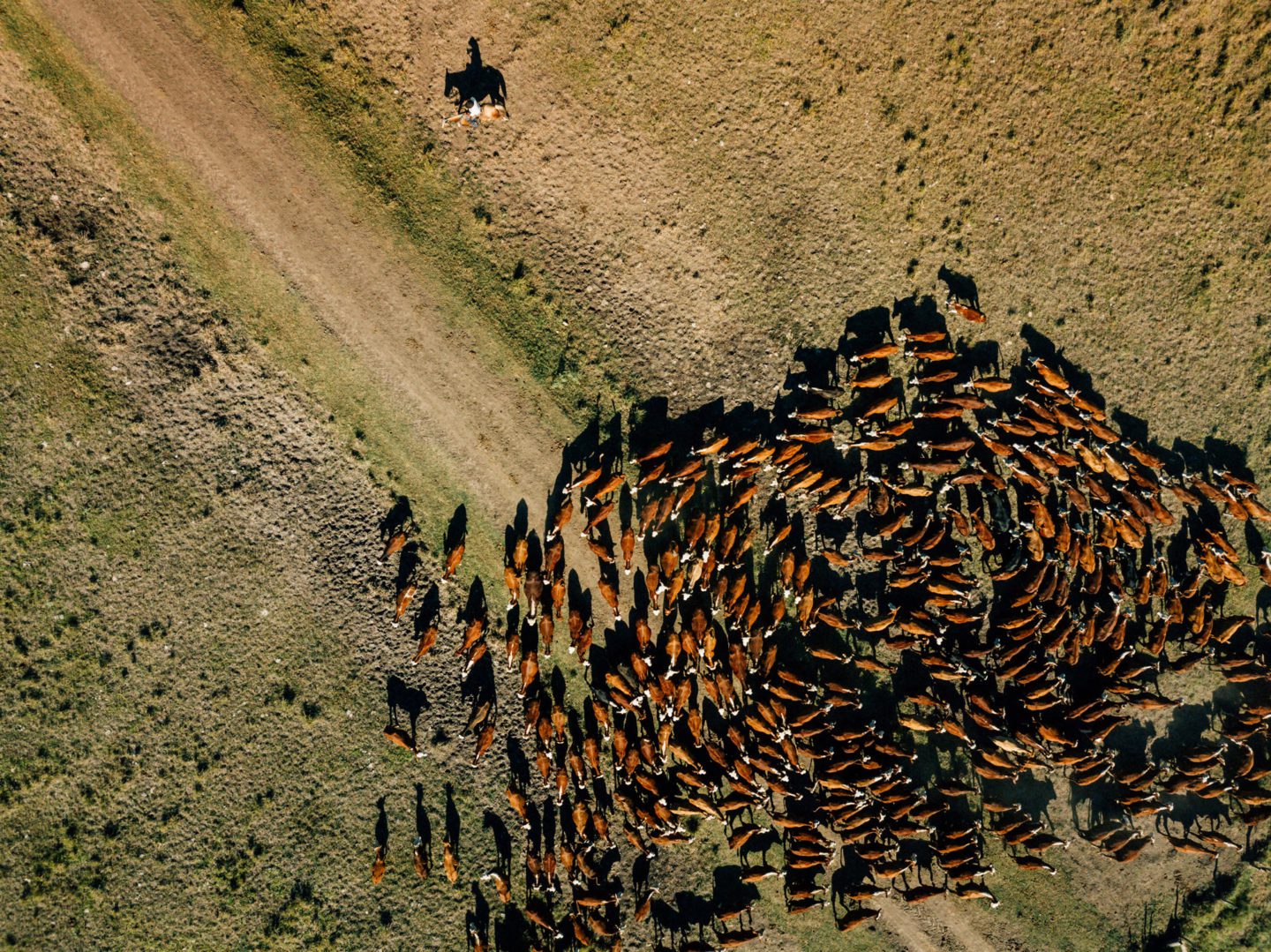
A bird’s eye view of gauchos hard at work on estancia Salina rounding up cattle. This is done in order to pick out (using the lasso) and treat any of those with ailments. Photography: Greg Funnell.
The gauchos too have become the most valued in Argentina’s rural workforce today, hardy to challenging conditions and willing to work. If you look under the sombrero of many a gaucho in Patagonia or La Pampa, you’ll likely find a man from the northeast. Displaced but grounded in their vocation they are continuing the work and traditions of their forefathers in a fast-changing world. How long that will last remains to be seen.
Right now, then, the gaucho exists on a cultural fault line – on one side lies centuries of tradition, on the other the ever louder roar of globalisation. He hasn’t become a figure of folklore in Argentina yet. But with each year that passes, the drive for modernisation bites deeper and deeper into the territory he inhabits. While he remains an iconic, enigmatic figure, the true working gaucho today has retreated further into the crevices of Argentine society than ever before.

